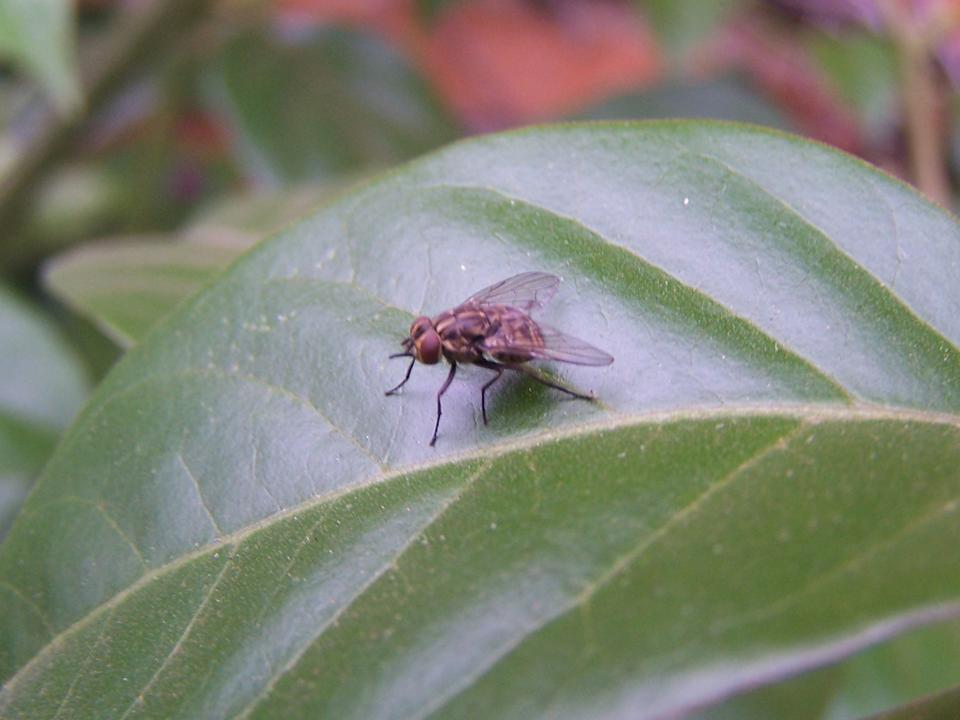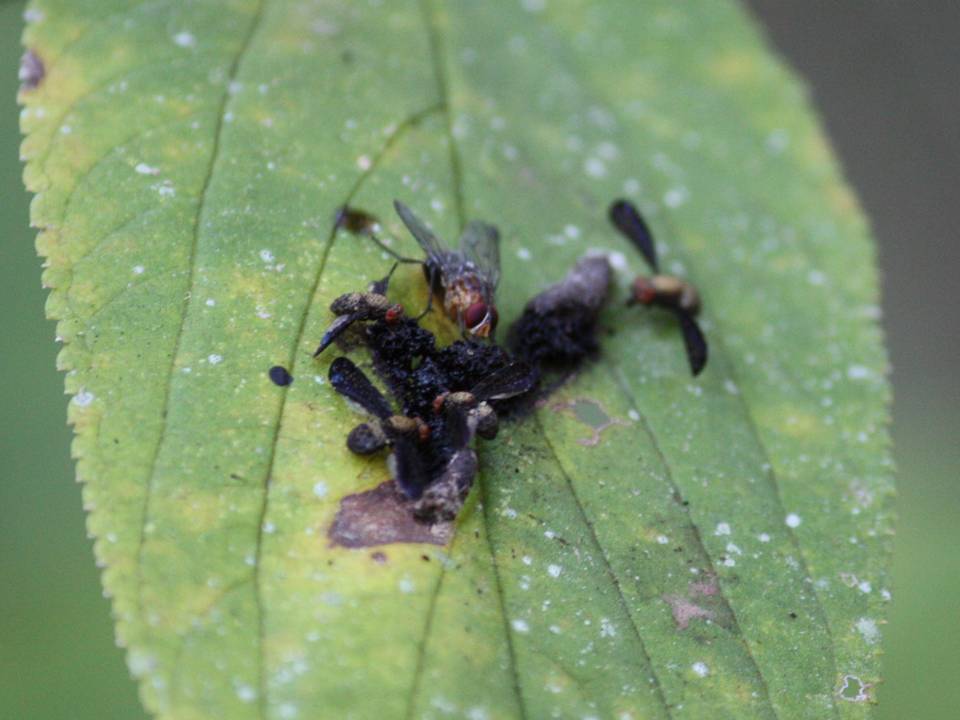

We are very grateful to Dr Sergio Ibañez-Bernal for the identification of the images
Designed by Paul Smith 2006. This website is copyrighted by law.
Material contained herewith may not be used without the prior written permission of FAUNA Paraguay.
Photographs on this page were taken by Paul Smith and Ted Faust are used with permission.
 | FIGURE 1 |
|
 | FIGURE 2 |
|
 | FIGURE 3 |
|
 | FIGURE 4 |
|
FIGURE 1 - Unidentified sp. - Encarnación, Departamento Itapúa (Paul Smith October 2009).
FIGURE 2 - Unidentified sp. - Encarnación, Departamento Itapúa (Paul Smith July 2008).
FIGURE 3 - Unidentified sp. - Encarnación, Departamento Itapúa (Paul Smith August 2007).
FIGURE 4 - Unidentified sp. - PROCOSARA, PN San Rafael (Ted Faust May 2008).
MUSCIDAE - HOUSE FLIES
These are the annoying house flies that have you reaching for the swatter to keep them from landing on your dinner. Over 4000 species are known worldwide but by no means all live in close association with man. Members of this family can be identified by the three-segmented antenna, the presence of a frontal suture and well-developed calypters. The arista is generally plumose along its entire length. Usually there is more than one sternopleural bristle and the hypopleuron lacks bristles. The Rs vein is two-branched. R5 cell is either parallel sided of narrows distally. Vein 2A does not reach the wing margin. Larvae breed mainly in decaying plant material or manure. The oldest fossils date back to the Eocene, but it has been suggested that they may have evolved as early as the Permian.
Click on the images to enlarge them.

